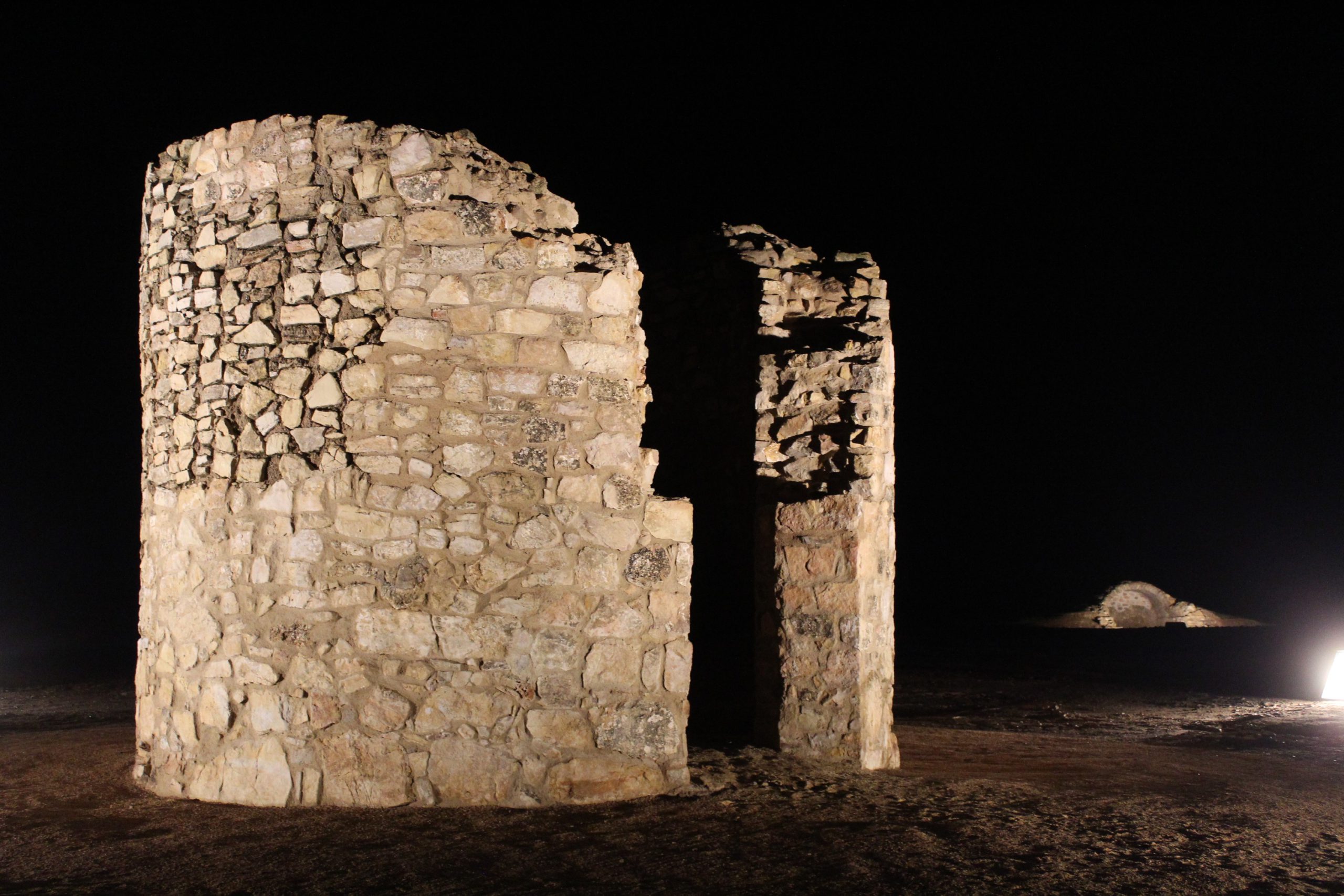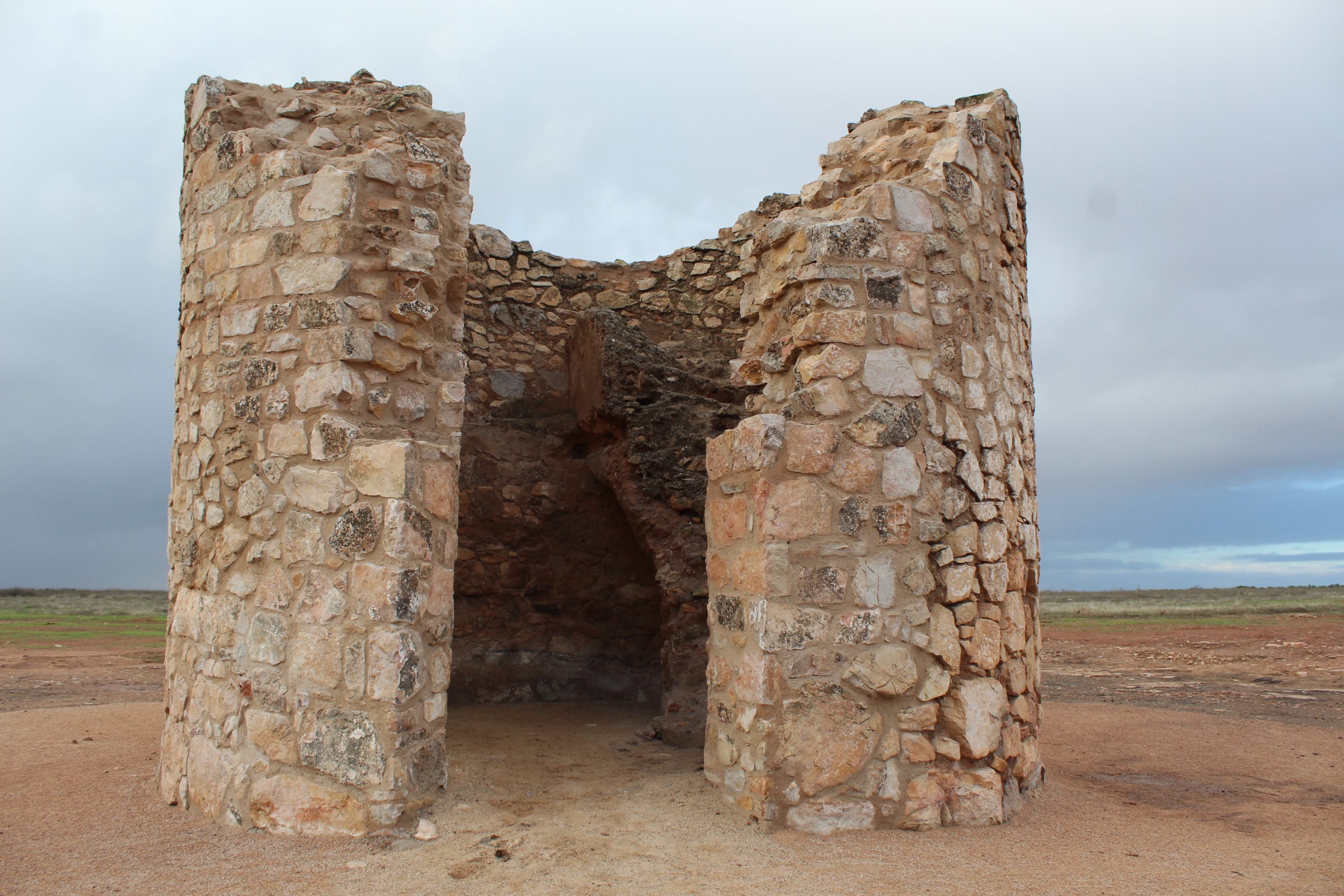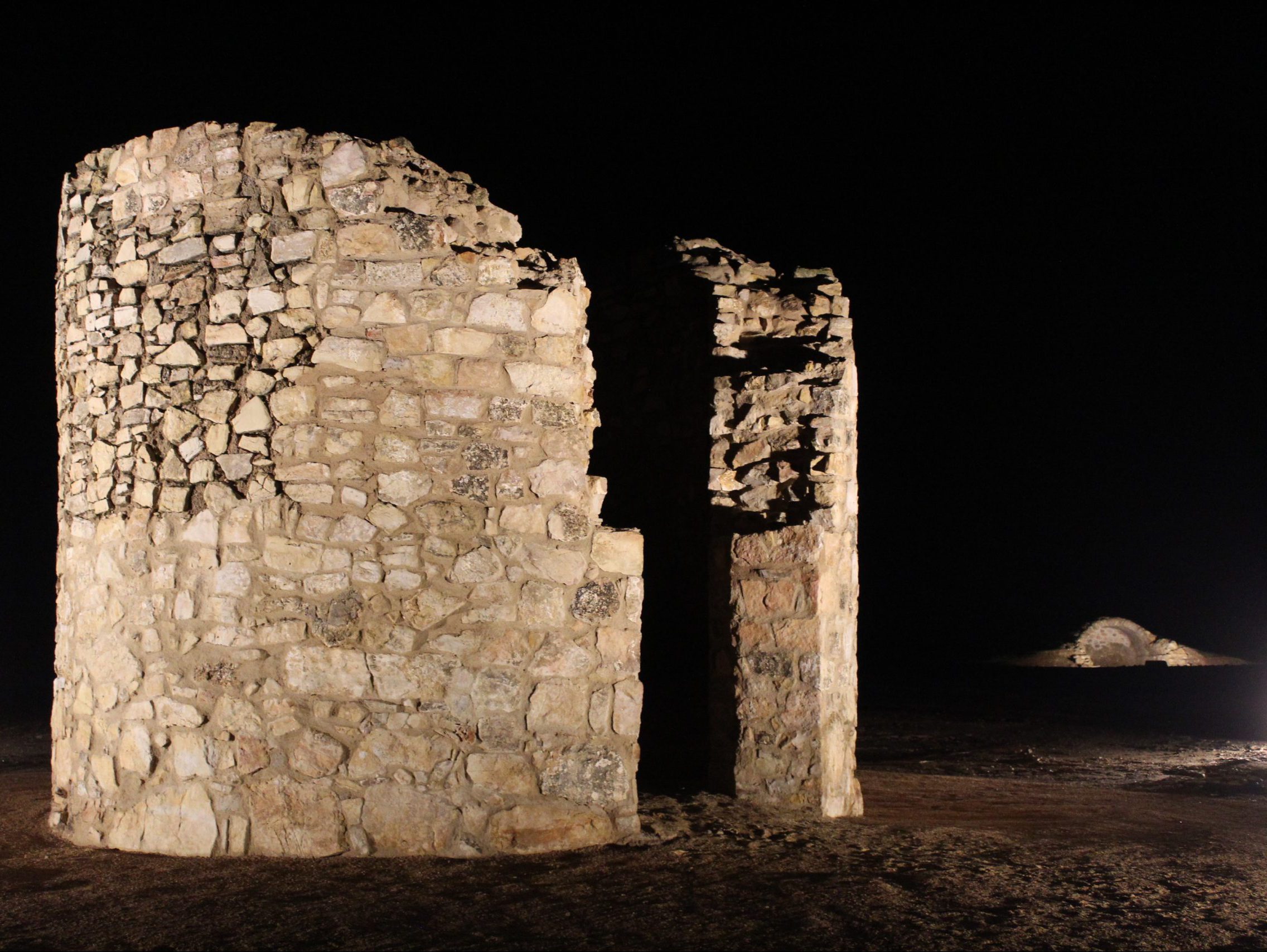The historic Marqués de la Ensenada Cadastre mills have a new illumination
- Fundación Iberdrola España has contributed more than 18,000 euros to this new lighting project.
- It is a uniform, medium-type lighting that respects the environment and reduces light pollution.
Iberdrola, within the framework of the collaboration agreement signed with the City Council of Campo de Criptana in November 2022, has developed the lighting project for the archaeological remains of the Historic Mills of the Marqués de Ensenada Cadastre. This project is another example of Iberdrola’s commitment to Castilla-La Mancha, the conservation of historical and artistic heritage, and the promotion of the social value of culture.
The lighting is carried out using projectors, using two types: one for the exterior walls and the other to illuminate the interior of the buildings. Each projector includes a remote control system that works with Bluetooth Low Energy (BLE), the most advanced wireless communication standard, and is fully compatible with all recent smartphones, tablets, and even smartwatches. Thanks to the use of open and standardized technologies combined with a practical app, it is a remote control solution to exploit the full potential of lighting installation.
The design has sought to obtain a “natural lighting” effect, enhancing the volumes of the architectural ensemble. For this purpose, the most advanced LED technology has been used. Specifically, 12 projectors with a combination of warm color temperatures have been installed.

The inauguration ceremony was attended by Isabel Rodríguez, Minister of Territorial Policy and Government Spokesperson; Ana Muñoz, Deputy Minister of Culture of the Regional Government of Castilla-La Mancha; Jose Manuel Caballero, President of the Provincial Council of Ciudad Real; Santiago Lázaro, Mayor of Campo de Criptana and the President of the Iberdrola Spain Foundation, Fernando García Sánchez.
“Involving private initiative in the enhancement of our heritage, to expand our resources and promote tourism, is also one of the objectives of the Sustainability Plan,” explained the mayor of Criptana, Santiago Lazaro, at the launch of the historic mills.
For his part, Fernando García, president of Fundación Iberdrola España, added that this lighting is one more commitment of the foundation with Castilla – La Mancha to value the historical heritage of the region.
Fundación Iberdrola España has enhanced the value of the archaeological remains with this project, carrying out a uniform, medium type of lighting, respecting the environment, and reducing light pollution.
The execution of the project has involved an investment of more than 18,000 euros. This is one more commitment of Iberdrola with Castilla – La Mancha and its permanent purpose of promoting the social value of the culture and conservation of the historical-artistic heritage of the region.
Historic Marqués de la Ensenada Cadastre mills
The mill of Campo de Criptana is known as a tower mill. The drum is built with stone masonry, reducing its section in height with two levels. The exterior is plastered with lime and sand mortar and whitewashed to protect it. The circular floor plan, with a thick wall, supports a wooden structure roof, sometimes covered with zinc and in the older ones with wood, so that it can be oriented to the wind.
The cave-silo follows the guidelines of the construction of the Mill, thick rectilinear walls of lateral masonry, attached to the surrounding terrain, and a circular masonry vault supported by the lateral walls. The front enclosure is made by a rectangular wall of constant thickness where the access hole to the silo is executed, utilizing a wooden door of a leaf, sufficient for the access to manually ensile the sacks that contained the grain to be processed and also allowed the access of small horses (mules or donkeys).

Iberdrola, with the promotion of art and culture
One of Iberdrola’s main areas of action, through its foundation in Spain, focuses on the care, conservation, and enhancement of historical and artistic wealth. The main objective of the Lighting Program is to develop interventions in unique buildings to install or improve their interior and/or exterior lighting systems to contribute to the enhancement of heritage.
Since 2011, the volume of investment allocated to the Lighting Program has amounted to more than 3 million euros and has led to improvements in more than 40 monuments in Spain, including the Cathedral of Avila, the interior of the Cathedral of Palencia and the New Cathedral of Salamanca, the historic Roman Bridge of Alcántara in Cáceres, the façade of the Congress of Deputies, the Palace of the Supreme Court in Madrid, the Cathedral of Santiago de Compostela and the Cathedral of Sigüenza.


